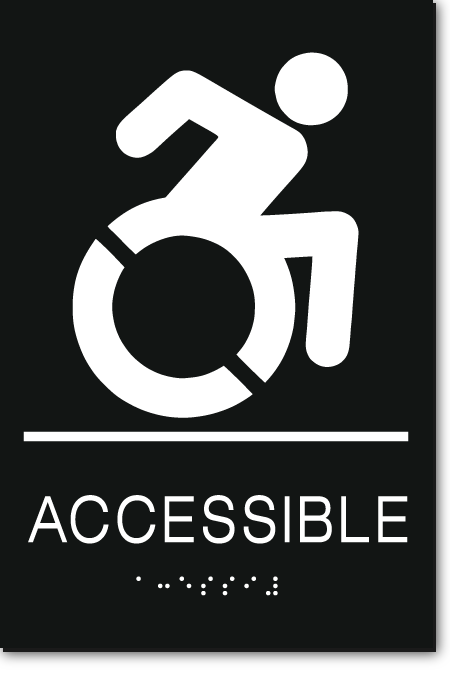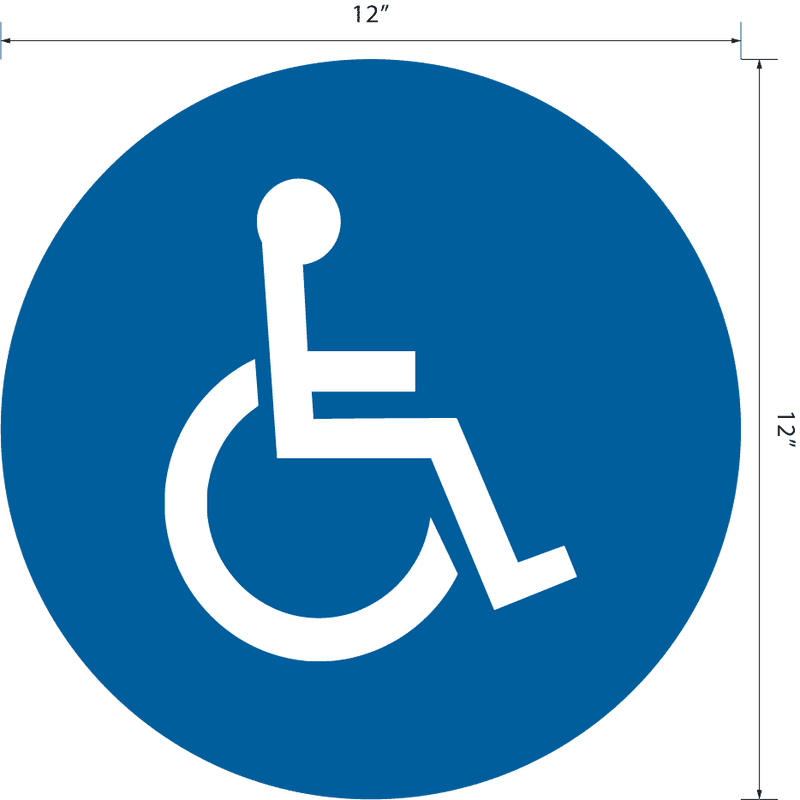Checking Out the Trick Features of ADA Indications for Boosted Access
In the realm of access, ADA indications offer as silent yet powerful allies, making sure that areas are navigable and comprehensive for individuals with handicaps. By integrating Braille and responsive components, these signs break obstacles for the visually damaged, while high-contrast color plans and understandable typefaces cater to varied visual requirements.
Importance of ADA Compliance
Making certain conformity with the Americans with Disabilities Act (ADA) is essential for cultivating inclusivity and equivalent access in public rooms and work environments. The ADA, established in 1990, mandates that all public centers, employers, and transportation services suit individuals with impairments, guaranteeing they appreciate the very same rights and chances as others. Conformity with ADA criteria not just satisfies lawful obligations but likewise improves a company's online reputation by demonstrating its commitment to diversity and inclusivity.
Among the crucial facets of ADA conformity is the execution of available signage. ADA signs are made to make certain that people with impairments can conveniently browse via spaces and buildings. These signs should abide by particular guidelines relating to dimension, typeface, shade comparison, and placement to assure visibility and readability for all. Properly applied ADA signs helps eliminate obstacles that individuals with specials needs often experience, therefore advertising their self-reliance and self-confidence (ADA Signs).
Additionally, adhering to ADA laws can alleviate the risk of potential penalties and lawful effects. Organizations that stop working to adhere to ADA standards may deal with charges or lawsuits, which can be both monetarily difficult and harmful to their public picture. Therefore, ADA compliance is indispensable to promoting a fair environment for everyone.
Braille and Tactile Components
The incorporation of Braille and responsive elements right into ADA signage symbolizes the concepts of availability and inclusivity. It is normally placed under the corresponding text on signage to make certain that individuals can access the info without aesthetic aid.
Tactile aspects expand beyond Braille and consist of raised personalities and icons. These elements are developed to be noticeable by touch, allowing individuals to identify space numbers, restrooms, departures, and various other essential locations. The ADA establishes details standards pertaining to the dimension, spacing, and placement of these tactile aspects to optimize readability and make sure uniformity across various environments.

High-Contrast Color Systems
High-contrast color design play a crucial duty in improving the presence and readability of ADA signs for individuals with visual impairments. These schemes are vital as they make best use of the difference in light reflectance between text and history, making sure that indications are easily noticeable, also from a distance. The Americans with Disabilities Act (ADA) mandates the use of certain color contrasts to fit those with limited vision, making it a crucial aspect of compliance.
The effectiveness of high-contrast colors hinges on their capacity to stand apart in various illumination problems, including dimly lit settings and areas with glow. Usually, dark text on a light background or light message on a dark history is used to achieve optimum contrast. Black message on a white or yellow history supplies a stark aesthetic difference that aids in fast recognition and understanding.

Legible Fonts and Text Dimension
When considering the style of ADA signage, the choice of legible fonts and suitable message size can not be overstated. The Americans with Disabilities Act (ADA) mandates that fonts have to be sans-serif and not italic, oblique, script, extremely ornamental, or of unusual form.
The dimension of the text additionally plays a critical duty in access. According to ADA standards, the minimum message height should be 5/8 inch, and it should boost proportionally with seeing distance. This is specifically important in public rooms where signage requirements to be read swiftly and accurately. Uniformity in text size adds to a cohesive visual experience, assisting individuals in browsing atmospheres successfully.
Moreover, spacing between lines and letters is indispensable to readability. Appropriate spacing stops characters from appearing crowded, enhancing readability. By sticking to these standards, developers can dramatically improve accessibility, making certain that signage offers its intended function for all individuals, no matter their aesthetic capabilities.
Efficient Placement Methods
Strategic placement of ADA signs is essential for taking full advantage of availability and making sure conformity with lawful requirements. Appropriately located indications assist people with disabilities properly, promoting navigation in public areas. Trick considerations consist of exposure, distance, and height. ADA standards specify that signs must be mounted at an elevation between 48 click to read more to 60 inches from the ground to guarantee they are within the line of sight for both standing and seated individuals. This typical height array is vital for inclusivity, enabling wheelchair individuals and people of differing elevations to gain access to details effortlessly.
Furthermore, signs should be placed beside the lock side of doors to enable easy identification before entrance. This placement assists individuals situate areas and spaces without blockage. In instances where there is no door, signs should be positioned on the closest nearby wall. Consistency in indication placement throughout a center boosts predictability, decreasing complication and improving total user experience.

Verdict
ADA signs play a crucial duty in advertising ease of access by incorporating features that attend to the needs of individuals with specials needs. Integrating Braille and tactile elements makes sure essential information is easily accessible to the visually impaired, while high-contrast color plans and understandable sans-serif typefaces enhance exposure across different lights problems. Reliable placement strategies, such as suitable mounting elevations and calculated places, better promote navigating. These elements jointly promote a comprehensive setting, underscoring the value of ADA conformity in making sure equal accessibility for all.
In the realm of availability, ADA indicators offer as silent yet effective allies, ensuring that areas are comprehensive and navigable for individuals with disabilities. The ADA, established in 1990, mandates that all public facilities, employers, and transport services accommodate individuals with specials needs, ensuring they take pleasure in the same rights and opportunities as others. ADA Signs. ADA indications are designed to make sure that people with disabilities can conveniently navigate via buildings and rooms. ADA guidelines state that signs need to be placed at a height in between 48 to 60 inches from the ground to guarantee they are within the line of sight for both standing and this website seated individuals.ADA signs play a crucial role in promoting availability by incorporating attributes that attend to the demands of people with handicaps